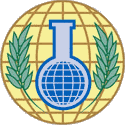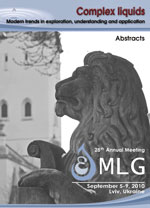Intermolecular charge flux induced by the OH stretching mode of water and its effect on the intermolecular vibrational coupling
Hajime Torii
It is well known that the OH stretching mode of water has a significantly larger IR intensity in the liquid state than in the isolated state. This IR intensity enhancement is recognized as induced by hydrogen bonding, but its electronic structural aspect has not been well clarified. Meanwhile, the OH stretching mode of liquid water is known to have a strong intermolecular vibrational coupling, giving rise to the large noncoincidence effect and the rapid vibrational excitation transfer between molecules. The latter effect is observed as a rapid decay of transient IR absorption anisotropy. This strong intermolecular vibrational coupling is often explained by the transition dipole coupling (TDC) mechanism, in which the dipole derivative (the square of which is proportional to the IR intensity) plays a crucial role.
The purpose of the present study is twofold. One is to analyze the electronic structural aspect of the IR intensity enhancement of the OH stretching mode of water upon hydrogen bonding. It is shown that a charge flux of a significant magnitude is induced between molecules, and its effect on the IR intensity is larger than that of the intramolecular charge flux. The other is to examine the effect of this intermolecular charge flux on the intermolecular vibrational coupling. The reason for the strong intermolecular vibrational coupling is shown from the electronic structural viewpoint, and the extent of validity of the TDC mechanism is discussed.



